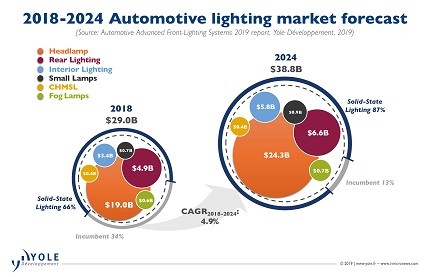NEWS & BLOGS

Automotive lights are indispensable accessories, which can increase the safety, operability, and recognition of the driver during driving.
The material of the automotive lights is made of transparent materials, and the main light is seen through the electromagnetic spectrum, which is the visible light band. The wavelength of light waves is between 400 nanometers and 760 nanometers. The light transmittance of transparent materials is above 80%. Common materials are PS, and PVC; engineering materials are PMMA and PC.
Transparent materials are amorphous materials. This is because the higher the crystallinity of the plastic product, the greater the anisotropy of the product and the lower the transparency. Therefore, when the crystallinity decreases, the transparency increases, such as those completely amorphous polymers, which are usually transparent, such as PMMA, PS, and so on.
Why PMMA and PC?
Requirements to meet the requirements: 1. Stable light transmittance and light transmittance> 80%; 2. Weather resistance and UV resistance; 3. Meet the requirements of two-color or multi-color injection molding; 4. Weldable (requires thermoplastic materials); 5. Front The headlight cover is impact resistant and resists the impact of stones during driving; 6. The headlight cover can withstand a temperature of about 100°C; 7. It can be directly sprayed with hardened and atomized paint (requires polar materials); 8. It meets the above requirements and is low in price.
PMMA: Good light transmittance, 93%. It has a certain strength, 7 to 8 times higher than ordinary glass. It can be used at -60~100℃. It is dimensionally stable under certain conditions and easy to form. Main uses: transparent parts, decorative parts optical parts, etc. Conclusion: It can be used as a tail light and indicator light.
PC: Excellent comprehensive performance, outstanding impact strength, and creep resistance, in this respect, it is the most excellent among thermoplastics; it can be used for a long time at -60~120℃, low water absorption, good dimensional stability, molding Low shrinkage; main uses: instrumentation parts, impact-resistant parts, transparent parts, insulating parts. Conclusion: It can be used as a front lamp material.
What Can We Do For You
